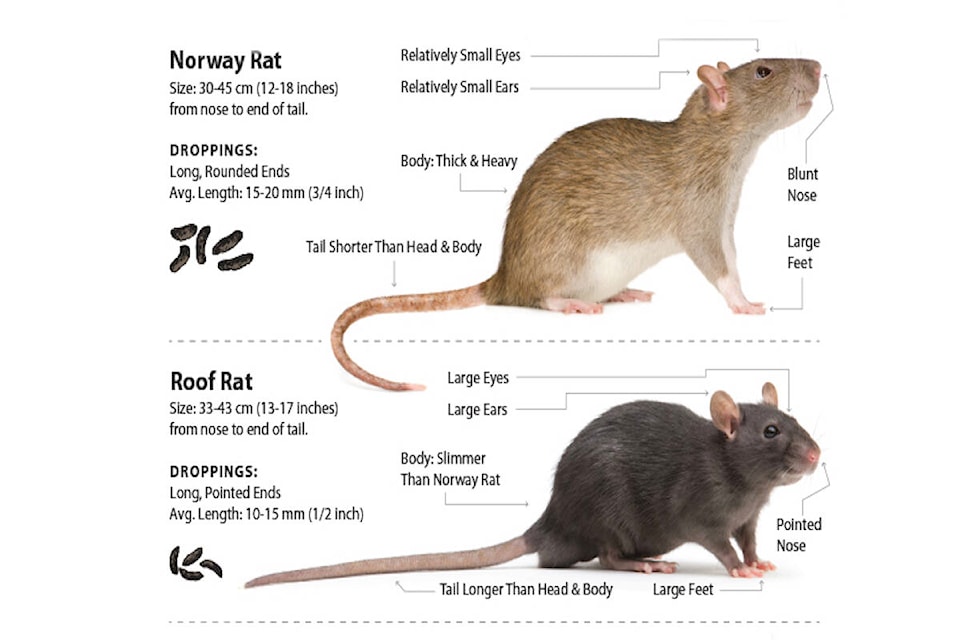They’ve been ratted out as the latest invasive species of concern, prompting Sicamous council to send out a reminder on how to deter rats.
At the April 10 meeting, council received a media release from the Columbia Shuswap Invasive Species Society with pointers to help stop the spread of invasive rodents, with the Norway and Black rat identified as the culprits.
“It speaks to how to get rid of them, how you should get rid of the rodents and that they are becoming a couple of bad little rats that are becoming a problem,” Mayor Colleen Anderson said of the release.
It explains that the misleadingly named Norway rat is actually native to China and Mongolia, while the Black, or roof, rat originated in India, but came to Canada via European settler ships in the 1800s. The uninvited guests, which can have up to 900 babies in a single year, damage infrastructure, contaminate food sources and prey on seabirds. They’re also known to transmit diseases, negatively impact crops and eat chicken eggs and chicks.
Coun. Siobhan Rich proposed putting the information on one of council’s mail-outs, as they did last year, reminding the community about problem rodents and how to deal with them.
“It seems like raccoons and rats are our big problem here in Sicamous,” she said. “I don’t know if… that’s something we want to do again, but it maybe reminds people to keep their shrubs down, and use their eco-cycler thing [FoodCycler] and not have compost.”
In the media release, CSISS executive director Robyn Hooper added that residents should “block off potential entry points and remove and securely store any food or garbage that might attract rats.”
When asked about including that information on a mail-out, deputy corporate officer Sarah Kyllo said staff had previously worked on a campaign specific to both rats and raccoons, and they could definitely relaunch that to remind residents how to avoid and remove attractants.
Read more: Oh rats! Two invasive species found in Columbia Shuswap area
Read more: Only a few days left to fundraise for animals in the Okanagan
